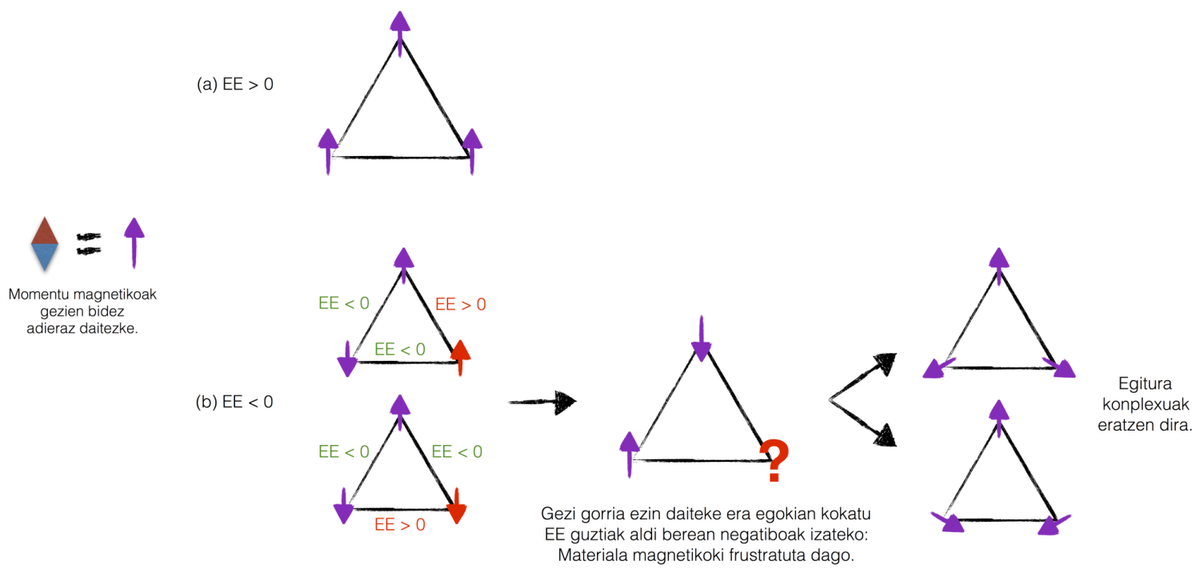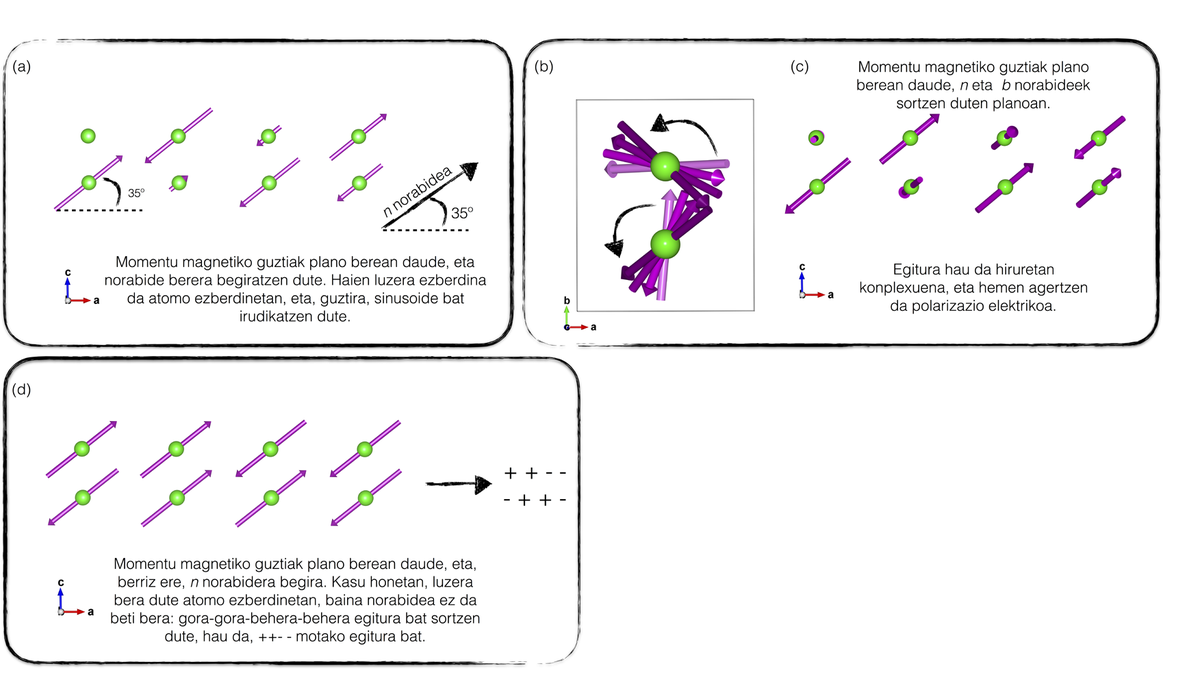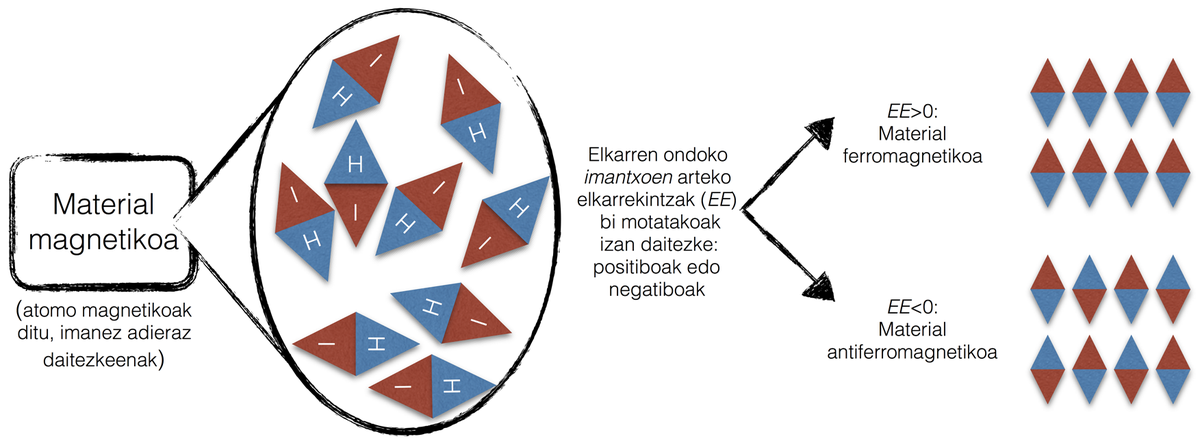Materials also get frustrated
How many times does it happen that for a long time something is being prepared and that at the last moment something will spoil our project? Or wanting things with the same will, but not being able to fill them all at the same time? In most cases we feel a bad body that we cannot avoid, that is, frustration. However, giving a solution to the situation that frustrates us is not always impossible. For this we need to change the point of view, develop new ideas or adapt to a new situation that we had not expected. And is that, often, the new unexpected results fill us more than we expected and are much more interesting than we imagined. Therefore, even though frustration itself is negative, finding ways to get out of there can be very enriching.
But what about materials? Materials have no desire, no desire, no feelings, but in some contexts it is said that materials are also frustrated. They want to reach a goal, but not. Thus, materials feel compelled to find an intermediate solution. This makes special features appear on the materials.
To see how materials can be frustrated we will look at their magnetic characteristics. When we talk about magnetic materials, in general, the image that first comes to mind is of a magnet, but there are also other types of magnetic materials. The common characteristic of all of them is that, among the atoms that make up the material, some are of magnetic moment. To make an idea, atoms with magnetic moments can be considered microscopic magnets, with north pole and magnetic south pole.
Suppose a material with magnetic atoms of a single type. In this magnetic material we will have millions of magnetic atoms, that is, millions of imantxo. Just as a magnet exerts a force on the other when we approach between two macroscopic magnets, magnetic interactions (NR) occur between the magnetic moments inside the magnetic material. Within the materials, these interactions can be, in general, of two types: those that cause two contiguous magnets to be placed in parallel (ferromagnetic material) or that place them in an antiparallel way (antifromagnetic material). Thus, when the interaction is ferromagnetic, the interaction is positive, i.e. EE>0, so the magnetic moments are aligned in parallel configuration. However, when the interaction is anti-magnetic, the CE<0 and the unwide ones are aligned in an antiparallel configuration.
In magnetically frustrated materials, not all magnetic interactions are simultaneous. In other words, the obligations arising from the different directions of a magnetic atom are incompatible and, consequently, the magnetic moment of that atom does not know how to situate it with respect to the magnetic moments of the other atoms that flank it. To clarify all this we will use an example. Suppose the magnetic atoms are in a triangular network and all interactions have the same value. If the interaction between consecutive widths is ferromagnetic (CE>0), all interactions can be performed in parallel by putting all moments. However, if EE<0 is not possible to perform all interactions at the same time and the system gets an intermediate structure: there are no problems to locate two of the three magnetic moments, placing both antiparallel. But what can be done with the third? The latter cannot be placed antiparallel to the other two simultaneously. Consequently, the material does not know what to do, is frustrated and, to get out of this situation, the material gets intermediate, neither parallel nor strictly antiparallel configurations. Due to these special magnetic structures, in many cases the material has special characteristics that can lead to electrical polarization. Materials with magnetic structure and electrical polarization can be of great interest for technological applications such as the construction of sensors and information memories.

Let us analyze a particular case in which magnetic frustration produces complex magnetic structures and one of them is the origin of electrical polarization. The magnetic structures of the MnWO4 material were studied in the 1990s. In this material, the only magnetic atom is manganese, Mn. This material has three magnetic structures or phases at low temperatures below 13.5 K (see figure 3). In the first phase that appears when the temperature drops, the magnetic moments are located in the plane ac, at 35º of the axis a (direction n) and their amplitudes or lengths vary from one atom to another (figure 3a). In the central phase (Figures 3b and 3c), the magnetic moments are added the component b, and in this way they are located in the plane generated by the directions n and b. As can be seen in figure 3b, if the projection of the magnetic structure is done in the plane ab, it seems that the magnetic moments turn. In the last structure (figure 3d), the component b of the magnetic moments is lost and the magnetic moments return to the direction n with the same length in the ++- configuration. That is, the moments are parallel by couples and each couple is antiparallel to the lateral couple.

The origin of this succession of magnetic structures lies in the strong competition between magnetic interactions that generate magnetic frustration. The magnetic frustration that occurs in this compound at low temperatures was demonstrated in 2011. The magnetic interactions between the different manganese pairs were measured and, as they saw, the interactions between five pairs of atoms, those of greater intensity and therefore the main ones, are negative, so they establish an antiphromagnetic interaction between the pairs of atoms involved. These impositions are not simultaneous, so the compound is frustrated. We want to fill all interactions, but not. This makes complex and diverse magnetic configurations appear in the material due to small temperature changes.
The complexity of magnetic structures is the result of the system resolving frustration. As mentioned above, the results obtained in the resolution of the frustration situation sometimes enrich the system. This is the case of the intermediate magnetic structure of the MnWO4 compound. This structure is especially interesting: due to the symmetry of the structure itself, it allows the appearance of electric polarization. Unfortunately, as it is a phenomenon that occurs in this case at very low temperatures, the material at the moment is not useful for technological applications.
The appearance of a wide variety of magnetic structures is due to the high competition between interactions in the same compound. In conditions of high competition, external areas (temperatures, pressures, magnetic fields...) or chemical substitution can break this balance between interactions and establish a new magnetic structure in the material, as well as any physical property related to such structure. This is the origin of the appearance of three magnetic structures in a temperature range of 13.5 K.
In addition to the influence of temperature, the influence of ion exchange has been analyzed. By replacing manganese with cobalt ions, the electrical polarization structure stabilizes at very low temperatures, disappearing the structure in the form of ++-. In addition, a new magnetic phase appears in a material with 10% cobalt: the structure with magnetic polarization is transformed and therefore changes the direction of polarization. By increasing the cobalt concentration, in the case of the compound Mn0,85Co0,15WO4, there are numerous magnetic structures present in the material even at a fixed temperature. In this sample the magnetic frustration is so great that at certain temperatures a single structure is not stabilized.
It is clearly observed that the MnWO4 material is a system of great magnetic frustration and that when changes of different types occur, that is, when interactions between atoms are modified, new magnetic balances are achieved in the material, resulting in completely different magnetic structures. The physical properties totally linked to these magnetic structures also change when new balances are reached. In the case at hand, the electrical polarization undergoes changes in temperature and the number of cobalts.
Therefore, although in principle frustration refers to living beings, we have seen that materials are also frustrated. This frustration is due, in the case analyzed, to atoms acquiring incompatible obligations. The system, in this case, finds an intermediate solution: it forms complex magnetic structures. In addition, as we have seen, we can adapt that frustration by placing the material in different situations and thus modify its characteristics.
Living beings also, sometimes, should learn from materials and, instead of staying in frustration, we should strive to find and find solutions to situations. Keep in mind that many times these solutions can lead to some unexpected result that can be positive!
Bibliography
Arkenbout A. H., Palstra, T. T. M.; Siegrist, T.; Alevín, T. (2006): “Ferroelectricity in the cycloidal spiral magnetic phase of MnWO4” Phys. Rev. B 74, 184431.
Chaudhury, R. P.; Ye, F.; Fernandez-Baca, J. A.; Wang, Y. Q.; Sun, Y. And.; Lorenz, B. H.; Mook, A.; Chu, C. W. (2010): “Magnetic and multiferroic phases of single-crystalline Mn0.85Co0.15WO4” Phys. Rev. B 82, 184422.
John T. Chalker (2011): “Introduction to Frustrated Magnetism, Materials, Experiments, Theory”. Springer Series in Solid-State Sciences, ISSN 0171-1873.
Lautenschläger, G.; Wietzel, H.; Vogt, T.; Hock, R.; Böhm, A.; Fuess, H. (1993). “Magnetic phase transitions of MnWO4 studied by the use of neutron diffraction”. Phys. Rev. B 48, 6087.
Song, Y. S.; Chung, J.H. ; Park, J. M. S.; Choi, Y. N. (2009): “Stabilization of the elliptical spiral phase and the spin-flop transition in multiferroic Mn1{xCoxWO4” Phys. Rev. B 79, 224415.
Urcelay-Olabarria, I. ; Ressouche, E.; Mukhin, A. A.; Ivanov, V. Yu. ; Balbashov, A. M.; Vorob’ev, G. P.; Popov, Yu. F.; Cadomtseva, A. M.; García-Mu<unk> oz, J. L.; Skumryev, V. (2012). Neutron diffraction, magnetic, and magnetoelectric studies of phase transitions in multiferroic Mn0.90Co0.10WO4. Phys. Rev. B 85 094436.
Urcelay-Olabarria, I. ; Ressouche, E.; Mukhin, A. A.; Ivanov, V. And.; Balbashov, A. M.; García-Mu<unk> oz, J. L.; Skumryev, V. (2012). Conical antifromagnetic order in the ferroelectric phase of Mn0.8Co WO4 resulting from the competition between collinear and cycloidal structures. Phys. Rev. B 85, 224419.
Ye, F.; Fishman, R. S.; Fernandez-Baca, J. A.; Podlesny, A. A.; Ehlers, G.; Mook, H. A.; Wang, Y.; Lorenz, B.; Chu, C. W. (2011): “Long-range magnetic interactions in the multiferroic antiferromagnet MnWO4” Phys. Rev. B 83, 140401.






